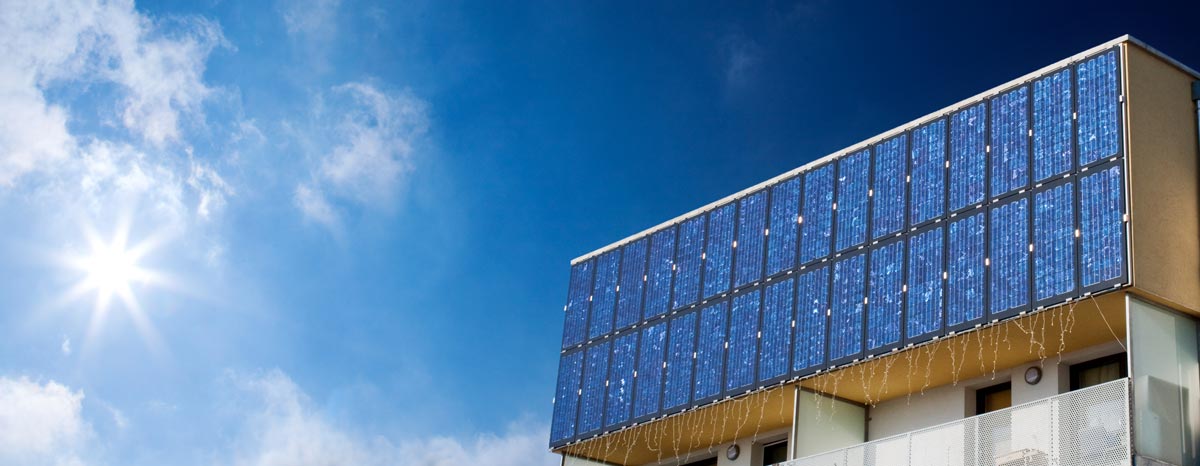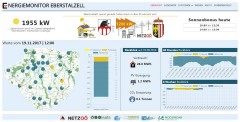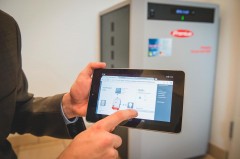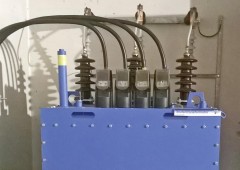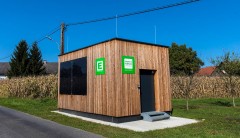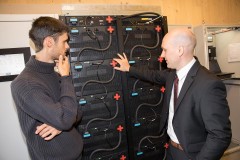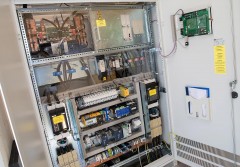With renewables‘ share of power generation steadily increasing, major challenges result, affecting not only high-voltage and medium-voltage networks but also low-voltage networks. This is due to the growing numbers of PV facilities and of additional consumers such as heat pumps or electric vehicles.
Today private PV facilities are operating in large numbers of Austrian households (about 60,000). Recently technologies for storing PV-generated electricity on the spot have been launched on an increasing scale. With compact electrochemical power storage units households can store the electricity they generate on the spot, and consume it themselves later. Up to now the grids have been dimensioned on the basis of statistical assumptions about consumers and producers. With new technologies such as on-the-spot storage and flexible loading, it is less and less feasible to obtain load profiles by purely statistical means. Instead, we get market-oriented load profiles with potentially great simultaneity in a node. If the new technologies spread widely enough, we may get thermal overloading and voltage problems in distribution networks.
In LEAFS (Integration of Loads and Electric Storage Systems into Advanced Flexibility Schemes for LV Networks) an energy research flagship project, which AIT Austrian Institute of Technology is implementing in collaboration with commercial and research partners1, technologies and operating strategies for active, network- and market-driven control of local storage systems and variable loading are being developed and tested in field trials. In addition, financial incentives are being evaluated and the cost-effectiveness of local storage systems analysed and assessed.
Simulation and technological development
Initially the researchers used simulations with representative model networks to investigate possible effects of market-driven storage utilization and load variability in distribution networks. They then developed new control strategies for various requirements: direct control of central (e.g. large-scale power storage) and local elements (e.g. household storage systems) as well as indirect control of local elements such as heat pumps or local storage systems on customers‘ premises via an energy management system.
Field trials
The various different methods of storage and control are being investigated and compared in network field trials in three communities: Köstendorf in Salzburg, Eberstalzell in Upper Austria and Heimschuh in Styria. In all three networks infrastructure from previous projects could be utilized to some extent, which saved expense and effort. For the various cases under consideration legal, economic and regulatory analyses were carried out, which will later be helpful when the new solutions are investigated for transferability and scalability.
Köstendorf (Salzburg Netz GmbH)
In the Smart Grid Model Community Köstendorf storage systems have been installed in five households with PV facilities, and integrated into the local control system, i.e. tied in with the Building Energy Agent (BEA), the regulated distribution transformer and the local electric vehicles. The Smart Control unit regulates the various elements indirectly. The grid operator acts as an aggregator, transmitting market signals.
Eberstalzell / Littring (Energie AG/Netz OÖ GmbH)
Here three household storage systems have been installed in a single network segment. Based on weather forecasts the grid operator transmits network constraints, which the storage system must comply with, via the power line every day. As the need arises, an aggregator (in this case Fronius International GmbH) transmits a market signal directly to the device via the internet. This approach models a crucial scenario for the future.
“Sonnenbonus” involves a second field trial. Here financial incentives are to be tested in relation to the rate of local PV generation. The aim is to motivate households to consume the electricity generated on the spot in specific timeframes. The customers receive 10 cents per kilowatt hour if they consume as much power as possible when plenty of power is being fed into the grid. Via an application one can find out whether and when on the following day the “Sonnenbonus” will be available. More than 200 households are taking part in this field trial, which is now in progress.
Heimschuh (Energienetze Steiermark GmbH)
In Heimschuh, a community in the south of Styria, nine households feed green power from their PV facilities into a central storage system, and withdraw it as the need arises. Usually the electricity from a household PV facility covers only about 30 % of an average household‘s power consumption, because demand often occurs when the sun is not shining. With a household storage system this figure can go up to as much as 70 %.
Up till now PV electricity generated on the spot normally is stored in a household storage system. For the field trial a battery with a storage capacity of 100 kWh has been installed – equivalent to 20 household storage systems. The battery is rated at 100 kW, which means that the new storage system can be used by several households simultaneously. As a result the cost of installation and maintenance is reduced, and the various households need no space for a separate storage facility indoors.

Foto: Energie Steiermark / Christian Jungwirth
Christian Purrer und Martin Graf,
Directors of Energie Steiermark
The trial, which will run till march of 2019, is intended to show how this central power storage unit can benefit the local power network, the customers and the market. The storage system is under the direct control of the grid operator. In addition it can deliver market services such as participation in the spot market. The expectation is that costs for the network customers will go down, while power consumption will be reduced and the power grid will be relieved and stabilized.
1 Commercial and research partners: AIT Austrian Institute of Technology GmbH (Project management), Fronius International GmbH, Siemens AG Österreich, Salzburg Netz GmbH, Netz Oberösterreich GmbH, Energienetze Steiermark GmbH, TU Wien (University of Technology Vienna) – Energy Economics Group, Energy Institute at the Johannes Kepler University (JKU) Linz, MOOSMOAR Energies OG
Share